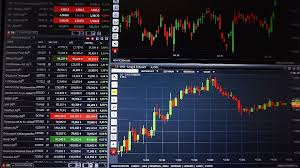
Essential Forex Trading Tutorial: Master the Market
Forex trading, also known as foreign exchange trading, is the act of exchanging one currency for another with the goal of making a profit. As the largest financial market in the world, forex offers numerous opportunities for traders. Whether you’re a complete beginner or an experienced trader, this tutorial will provide you with essential knowledge and skills. Don’t forget to check out forex trading tutorial Uzbekistan Brokers for community insights and broker options.
1. Understanding the Basics
Before diving into forex trading, it’s crucial to understand some key concepts:
- Currency Pairs: In forex, currencies are traded in pairs, such as EUR/USD (Euro/US Dollar) or GBP/JPY (British Pound/Japanese Yen). The first currency in the pair is known as the base currency, while the second is the quote currency.
- Pips: A pip is the smallest price movement in a currency pair. Typically, for most pairs, it’s the fourth decimal place.
- Leverage: Many forex traders use leverage to control larger positions than what they could afford with their capital. While it can amplify profits, it also increases risk.
2. The Trading Platform
To start trading, you need a trading platform offered by your broker. Most brokers provide platforms like MetaTrader 4 (MT4) or MetaTrader 5 (MT5). These platforms have user-friendly interfaces, robust charting tools, and allow you to execute trades easily.

3. Analyzing the Market
Successful trading relies heavily on analyzing the market accurately. There are two primary methods of market analysis:
- Technical Analysis: This involves studying price charts and patterns to predict future price movements. Traders use indicators like moving averages, Relative Strength Index (RSI), and Bollinger Bands to make informed decisions.
- Fundamental Analysis: This approach focuses on analyzing economic indicators, news events, and geopolitical factors that can influence currencies. For instance, interest rates, inflation, and economic growth rates are significant determinants of currency value.
4. Trading Strategies
Here are some popular strategies that forex traders use:
- Scalping: This strategy involves making a large number of small trades to accumulate micro profits. Scalpers typically hold positions for a few seconds to a few minutes.
- Day Trading: Day traders open and close positions within the same trading day. They aim to capitalize on intraday price movements and do not hold positions overnight.
- Swing Trading: Swing traders look for price “swings” in the market. They hold positions for several days or weeks, aiming to capture larger price movements.
5. Risk Management
Effective risk management is vital to long-term trading success. Here are some fundamental principles:
- Set Stop-Loss Orders: A stop-loss order automatically closes your trade at a predetermined price, limiting potential losses.
- Use Proper Position Sizing: Ensure you don’t risk more than a small percentage of your trading capital on a single trade, typically around 1-2%.
- Diversify Your Trades: Spread your risk by trading different currency pairs instead of putting all your capital into one trade.

6. Creating a Trading Plan
Every successful trader has a robust trading plan. Your trading plan should include:
- Your trading goals and objectives
- The strategies and methods you plan to use
- Your risk management rules
- A review process to evaluate your performance
7. Staying Disciplined
Discipline is crucial in forex trading. It’s easy to let emotions dictate your trading decisions, but sticking to your trading plan and methods will lead you to success. Establish a routine and regularly analyze both winning and losing trades to understand your performance and improve continuously.
8. Continuing Education
The forex market is constantly evolving, and there’s always more to learn. Stay updated on market trends, follow economic news, and consider engaging with trading communities to share experiences and strategies. Many online platforms, including forums and webinars, provide valuable resources for continued education.
Conclusion
Forex trading can be both profitable and rewarding if approached with the right knowledge and skills. By understanding the basics, analyzing the market effectively, implementing sound strategies, and practicing disciplined risk management, traders can significantly increase their chances of success. Always remember that practice, patience, and continuous learning are key elements in mastering forex trading.
